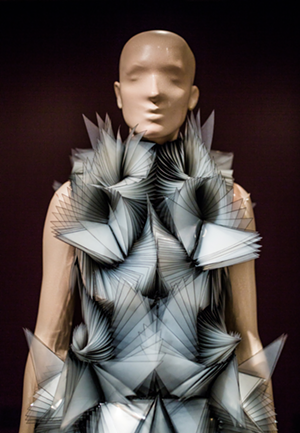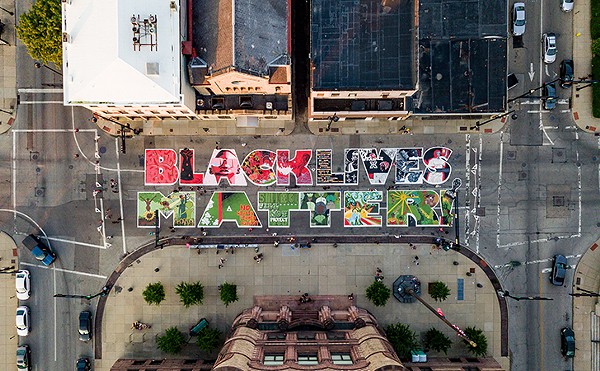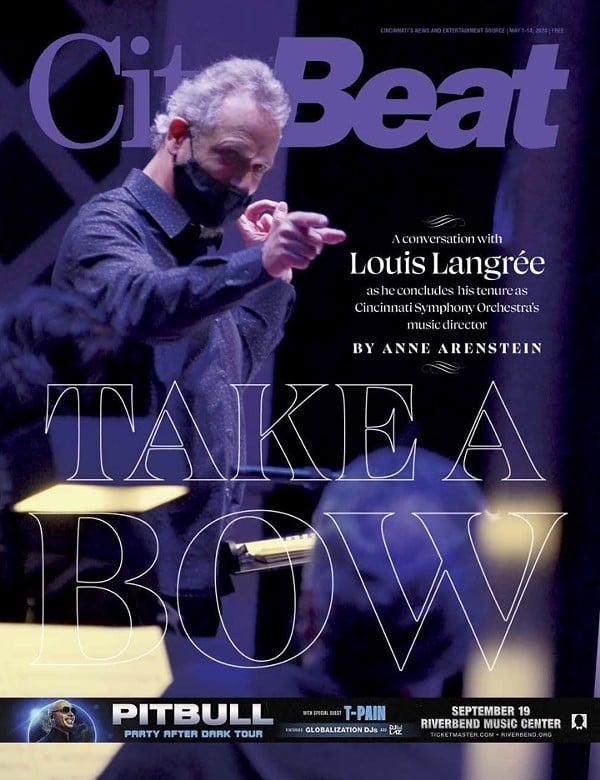Is fashion art? That debate finally might be coming to a rest with New York’s Museum of Modern Art just opening its first clothing design show in more than 70 years. Now the Cincinnati Art Museum turns the question around and introduces a fresh discussion.
Iris van Herpen’s cutting-edge designs, some created with the aid of 3D printing, certainly are art. Are they fashion?
(Click on the photo at left to begin a slide show/gallery of the outfits in the exhibit.)
Cincinnati Art Museum Chief Curator Cynthia Amneus, who also is the museum’s curator of fashion arts and textiles, is responsible for bringing Iris van Herpen: Transforming Fashion to town. The touring exhibit, which originated in van Herpen’s homeland of the Netherlands in 2012, features 44 visionary outfits and nine pairs of fierce-looking shoes.
Amneus, who has proven the local popularity of clothing exhibitions with the bridal gown survey Wedded Perfection and the Rudi Gernreich showcase The Total Look, knows some visitors will shake their heads over the lack of wearable looks in this latest display. Clouds of “refinery smoke” billow from a dress and nearly engulf one mannequin. A barely-there skeleton clings to another form. Coils of dark acrylic encircle another torso like snakes. But even the wildest styles highlight van Herpen’s experimentation and likely influence on future fashion.
“I think of her as an artist who happens to make things that are on the body,” Amneus says. “We are an art museum, showing the most innovative and avant-garde examples of her work.”
In 2010, van Herpen became the first designer to send a 3D-printed garment down a runway, and the rippling top, intended to represent the limestone scales left when water evaporates, is included in the show. The 33-year-old draws her inspiration from nature and natural phenomena and turns to technology, nontraditional materials, architects and other collaborators as needed to make her ideas reality.
She has created many beautiful pieces — the visual energy of her black and white Voltage collection could make your hair stand on end — but van Herpen is more interested in figuring things out than making clothes pretty, Amneus says. In fact, Transforming Fashion has much in common with the museum’s current Ana England: Kinship exhibit and that artist’s investigations of molecules, fossils and waves. Transforming Fashion is one part couture show, one part science fair. There’s even a station where visitors can touch some of the tantalizing 3D-printed materials, plastics and hand-burnished, hand-pleated steel mesh that van Herpen has used in her creations.
The names of van Herpen’s collections — for instance, Mummification, Crystallization, and Radiation Invasion — convey whatever science or phenomenon influenced her. She captured the emotions she felt while skydiving in a collection titled Capriole, a word meaning “leap.” Magnetic Motion was inspired by a visit to CERN (the European Organization for Nuclear Research) and the Large Hadron Collider. Her desire to represent the push and pull of those magnetic forces in a clear dress led to 3D printing of a transparent plastic — something she initially was told couldn’t be done.
One of her earliest collections, Chemical Crows, is based on a flock of birds near her Amsterdam studio. She made those dresses all by hand but was no less inventive, using the spines from children’s umbrellas to form collars that suggest patterns of flight.
“The way that she works is like an artist,” Amneus says. “She has an idea, a concept. ‘OK, how do I make this happen?’ ”
Van Herpen is not driven by technology, Amneus says. It’s merely a tool for her art. “She will play around with 30 or 40 different materials, 30 or 40 different techniques, and sometimes she will choose the handmade version over the technology, even though the technology might be faster, because the handmade technique brings to fruition what’s in her head.”
Visitors can play a guessing game over which pieces were 3D-printed. The big clear collar that mimics a cool splash? It’s handmade. In a video in the exhibit, art collector/designer/brewery heiress Daphne Guinness is repeatedly doused with black and clear water, and van Herpen chooses which still frame she wants to work with. We then see her using a heat gun, scissors and pliers on a sheet of PET plastic — the same material used in soda bottles — to recreate every drip. She is asked in the video how much she is willing to compromise. “I don’t like to compromise,” she responds.
But she does like to experiment. At one point, van Herpen talks about her appreciation of technology like 3D printing, as well as her fascination with nature and natural materials. “We are still wearing wools and silks,” she says, “but I really wonder if that is something we will still do in the future. It does trigger my imagination. What else can we wear?”
Van Herpen is marking 10 years since she launched her brand after internships with Alexander McQueen and the Dutch fiber artist Claudy Jongstra. “She was making fashion (in those internships) but wanted to build, to construct,” Amneus says. “She wanted to make things, not just sew. It was clear which way she was going.”
And van Herpen’s work is indicative of which way fashion is going, Amneus believes. Eventually, 3D printing and other technology will trickle down from haute couture to ready-to-wear clothes, she says.
She points to the prevalence of Fitbits and smartphones. “Who thought we’d be wearing technology? Who thought we’d have the internet in our pocket?” Amneus asks. Van Herpen, she says, is now looking at 4D printing of “smart cloth” that will warm up if it senses the wearer is cold.
“It’s coming. We will be wearing this stuff,” Amneus says. “I have no doubt about that.”
IRIS VAN HERPEN: TRANSFORMING FASHION is on view at Cincinnati Art Museum through Jan. 7, 2018. More info: www.cincinnatiartmuseum.org.






